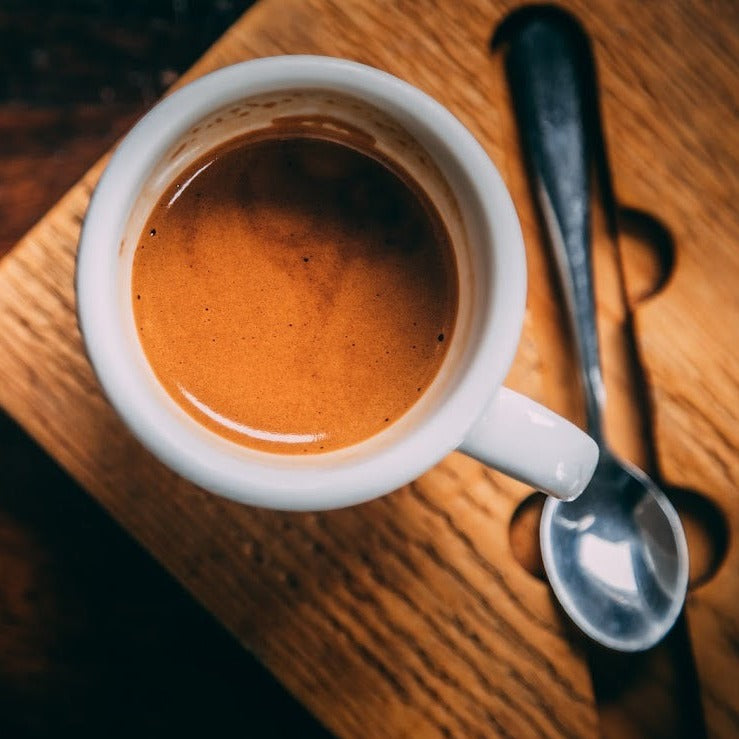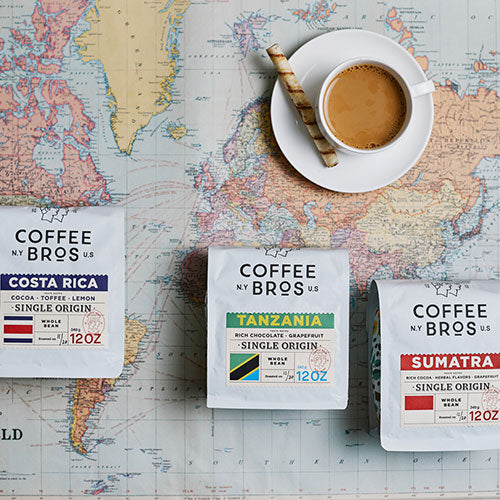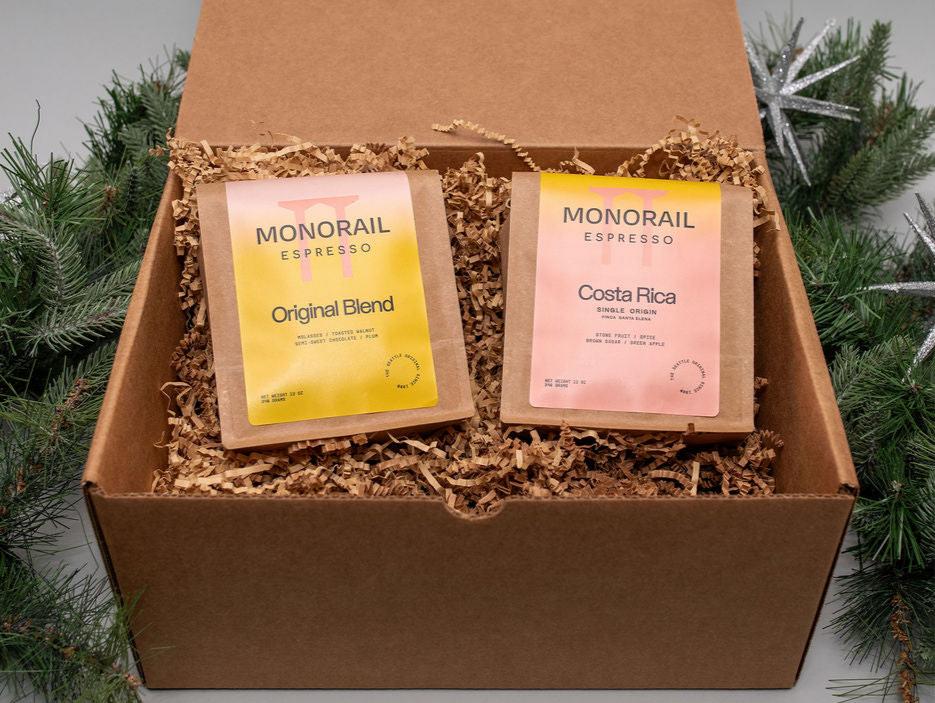Understanding Coffee Beans: the Trip From Coffee to Blended Coffee Beans

The Origins of Coffee: A Worldwide Viewpoint
While you could think about coffee as a modern-day staple, its beginnings map back centuries, intertwining with cultures across the globe. The tale starts in Ethiopia, where tale states a goat herdsman called Kaldi discovered the stimulating effects of coffee beans after observing his goats frolicking vigorously after eating them. This triggered passion, leading to coffee's infect Arab traders who cherished the made beverage. By the 15th century, it got to Persia, Egypt, and Turkey, where coffeehouses came to be social hubs for discussion and culture.
As trade paths increased, coffee made its method to Europe in the 17th century, quickly acquiring popularity. It transformed from a mystical beverage into an everyday ritual, intellectual exchanges and inspiring events. Each society included its unique twist to coffee preparation, enhancing its history. This global journey highlights how coffee links us, transcending boundaries and unifying diverse customs through an easy bean.
Growing and Harvesting of Espresso Beans
As coffee's journey evolved, the focus changed to the farming and harvesting of certain bean ranges, especially those utilized for coffee. You'll discover that coffee beans typically originate from Arabica or Robusta plants, each offering distinct flavors. The suitable growing conditions include high altitudes and abundant, well-drained dirt, which boost the beans' top quality.
During the harvest, choosing techniques vary. Timing is essential; you desire to collect when the cherries reach peak ripeness for maximum flavor.
Once collected, the beans are prepared for handling, which is crucial in identifying their last taste. Understanding the cultivation and collecting procedures gives you insight into what goes into your preferred espresso, enhancing your gratitude for every mug.
Processing Techniques: From Cherry to Bean
Currently that you've found out about harvesting coffee beans, let's discover how those cherries change into the coffee beans you love. You'll see just how different harvesting techniques influence taste, complied with by the crucial steps of fermentation and drying out. We'll damage down the milling and grading procedure that determines your coffee's high quality.
Harvesting Methods Explained
When it comes to coffee, comprehending harvesting techniques is important, given that they directly affect the taste and top quality of the beans you delight in. There are 2 main techniques: careful selecting and strip picking. Discerning picking includes hand-picking only ripe cherries, ensuring you get the finest quality beans. This method usually brings about a richer flavor profile, though it's even more labor-intensive. On the other hand, strip choosing methods gathering all cherries at when, no matter of ripeness. While it's quicker and less costly, this can result in a mix of tastes, influencing the end product. Inevitably, the option of gathering strategy can significantly influence your coffee experience, so it deserves understanding exactly how those beans made it to your mug.
Fermentation and Drying Out
After collecting, the following action in handling coffee beans play a significant role fit their taste. You'll discover that fermentation is vital, as it aids break down the mucilage bordering the beans, improving their preference profile. Depending on the method, this process can last from a few hours to several days, with varying outcomes based upon temperature and moisture.
Sun-drying permits the beans to take in tastes from the environment, while mechanical drying guarantees consistent moisture degrees regardless of climate. Proper drying is necessary to avoid mold and mildew and maintain the beans' top quality, ultimately influencing your cup of coffee.
Milling and Grading Refine
As fermentation and drying established the phase for taste advancement, the milling and grading process warranties that just the best coffee beans make it to your cup. This phase entails removing the outer layers of the coffee cherry, consisting of the parchment and husk. Premium beans obtain a greater grade, resulting in a richer coffee experience.
Toasting Techniques: Unlocking Flavor Potential
When you roast coffee beans, the technique you choose can significantly affect the taste profile. Comprehending the connection between time, temperature level, and roasting methods is crucial to exposing the potential of your mixture. Let's check out just how these components come with each other to develop the excellent cup.
Toasting Methods Clarified
While you might think that all coffee toasting methods produce the very same results, the truth is that each method exposes one-of-a-kind flavor potentials in the beans. You can choose between methods like drum roasting, air roasting, or perhaps conventional pan roasting. Drum toasting makes use of a turning drum to uniformly distribute heat, enhancing caramelization and generating a balanced flavor. Air roasting, on the various other hand, circulates hot air around the beans, promoting a lighter roast with obvious level of acidity. Frying pan toasting enables hands-on control yet calls for constant interest to prevent burning. Each technique has its subtleties, so try out different strategies can aid you uncover the best roast that aligns with your taste preferences. Appreciate the trip of discovering your perfect mug!

Influence on Taste Account
Different roasting approaches not only affect the procedure however likewise greatly affect the taste account of the coffee beans. When you select a light roast, you'll experience bright level of acidity and floral notes, showcasing the bean's beginning. On the other hand, a medium roast equilibriums acidity with sweetness, usually revealing chocolatey undertones. Dark roasts, on the various other hand, bring out bold, smoky tastes, sometimes concealing the bean's unique qualities. Each method discloses various oils and substances, causing a vast array of flavors. By try out different toasting styles, you can discover which profiles resonate with your palate. Understanding these nuances assists you appreciate the artistry behind your cup of coffee, boosting your total experience with every sip.
Time and Temperature Elements
To release the complete taste capacity of coffee beans, both time and temperature throughout the toasting process play significant functions. When toasting, you'll locate that higher temperature levels can swiftly create flavors, however if you hurry it, you may wind up with scorched notes. On the other hand, lower temperatures enable for a more progressive taste development, showcasing the beans' special features.

Timing is equally as important; prolonging the roast too long can bring about a loss of level of acidity and illumination, while as well short a roast might leave the beans underdeveloped. Discovering that pleasant area requires practice and trial and error. By adjusting these aspects, you can expose the abundant, complex flavors concealed within each bean, producing a genuinely amazing coffee experience.
The Art of Blending: Crafting Special Coffee Accounts

Beginning by choosing a base coffee that provides a solid structure. Then, pick complementary beans to boost particular taste notes. For circumstances, a bright Ethiopian bean can bring fruitiness, while an abundant Brazilian coffee adds body. Testing is essential-- do not hesitate to readjust proportions till you locate your suitable profile.
As you mix, remember that each mix narrates. You're not simply making coffee; you're developing an experience. Take your time, preference frequently, and delight in the journey of discovering your signature blend - Single Origin Espresso.
Brewing Techniques: Just How Prep Work Impacts Flavor
Mixing coffee opens up a domain of taste possibilities, yet exactly how you brew that blend can considerably affect your last mug. On the other hand, a pour-over highlights the coffee's clarity and illumination, excellent for showcasing fragile notes.
Espresso, with its high stress, creates a concentrated shot that emphasizes sweet taste and crema. If you favor a lighter mixture, take into consideration a chilly brew technique; it generates a smooth, much less acidic taste.
Readjusting variables like water temperature level, grind dimension, and brew time can change your coffee's profile. Accept the art of brewing to find the flavors hidden in your coffee blends.
The Future of Coffee: Sustainability and Advancement
As the coffee market evolves, sustainability and innovation are coming to be important for resolving ecological challenges and conference customer demands. You'll discover that even more coffee business are taking on environmentally friendly techniques, from sourcing beans ethically to carrying out sustainable farming methods. These shifts not just aid the world but also enhance the high quality of the coffee you delight in.
You might see advancements like eco-friendly packaging and water-saving developing techniques that decrease waste. Advanced innovation, such as blockchain, is additionally ending up being preferred, making sure openness in the supply chain, which allows you to trace your coffee back to its origins.
Furthermore, buying neighborhood communities and supporting farmers via fair trade efforts fosters a more lasting coffee community. As you drink your following cup, bear in mind that your selections can add to a brighter future for coffee. By choosing for sustainable brand names, you're not simply delighting in a beverage; you're making a positive influence on the globe.
Frequently Asked Concerns
What Is the Distinction In Between Arabica and Robusta Beans?
Arabica beans are smoother, sweeter, and have a greater level of acidity, while robusta beans are stronger, a lot more bitter, and include more high levels of caffeine. You'll discover these differences in flavor and fragrance when making your coffee.
Just How Does Altitude Affect Coffee Bean Flavor?
Altitude effects coffee bean flavor substantially. Greater elevations generate beans with brighter acidity and complex flavors, SOE while lower altitudes commonly produce beans that are larger and much less nuanced. You'll see these distinctions in your mug!
What Are the Health Perks of Alcohol Consumption Coffee?
Consuming alcohol coffee can increase your power, boost psychological emphasis, and also boost physical performance. It's abundant in antioxidants, may decrease the risk of particular illness, and can advertise a much healthier metabolism when consumed in small amounts.
Can Coffee Beans Be Recycled for Brewing?
Yes, you can recycle coffee beans for developing, however the flavor may be weaker. If you delight in experimenting, attempt recycling them in various means, like cool brews or including to smoothie mixes for an extra kick.
Just how Should I Shop Coffee Beans for Freshness?
To keep your coffee beans fresh, keep them in a closed container in a cool, dark location. Avoid subjecting them to light, wetness, or warm, as these elements can rapidly degrade their taste and scent.
Recognizing Coffee Beans: the Trip From Coffee to Blended Coffee Beans.
Currently that you've learned concerning harvesting coffee beans, allow's check out exactly how those cherries transform into the coffee beans you love.When you roast coffee beans, the technique you pick can dramatically impact the taste profile - Single Origin Espresso.While you might assume that all coffee toasting methods generate the exact same outcomes, the fact is that each method exposes unique taste possibilities in the beans.Various roasting approaches not just affect the procedure however likewise considerably affect the taste account of the coffee beans